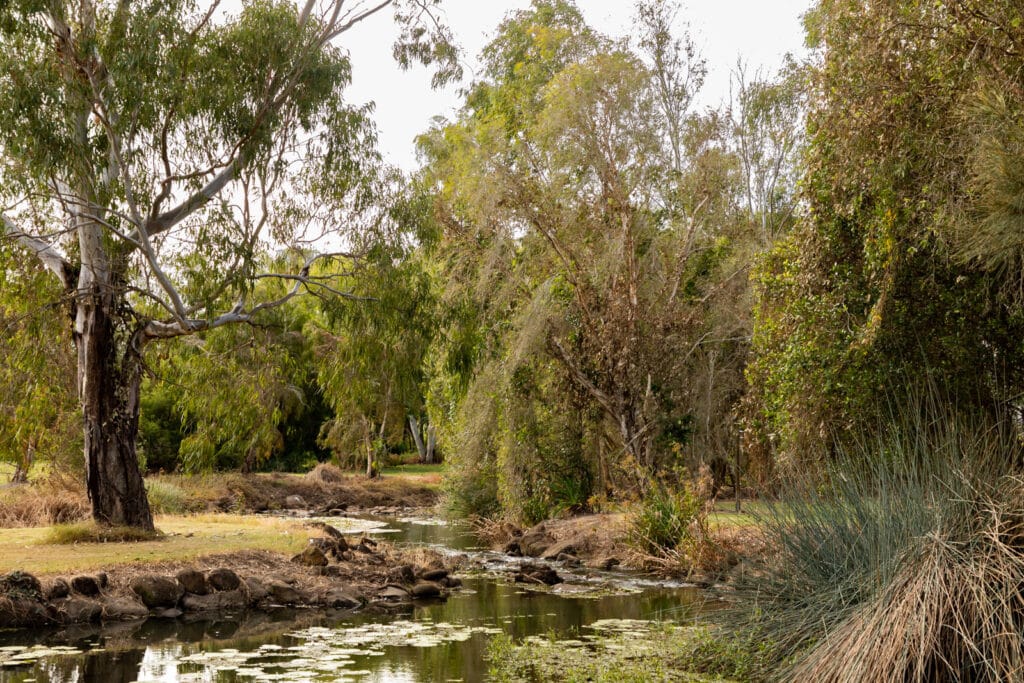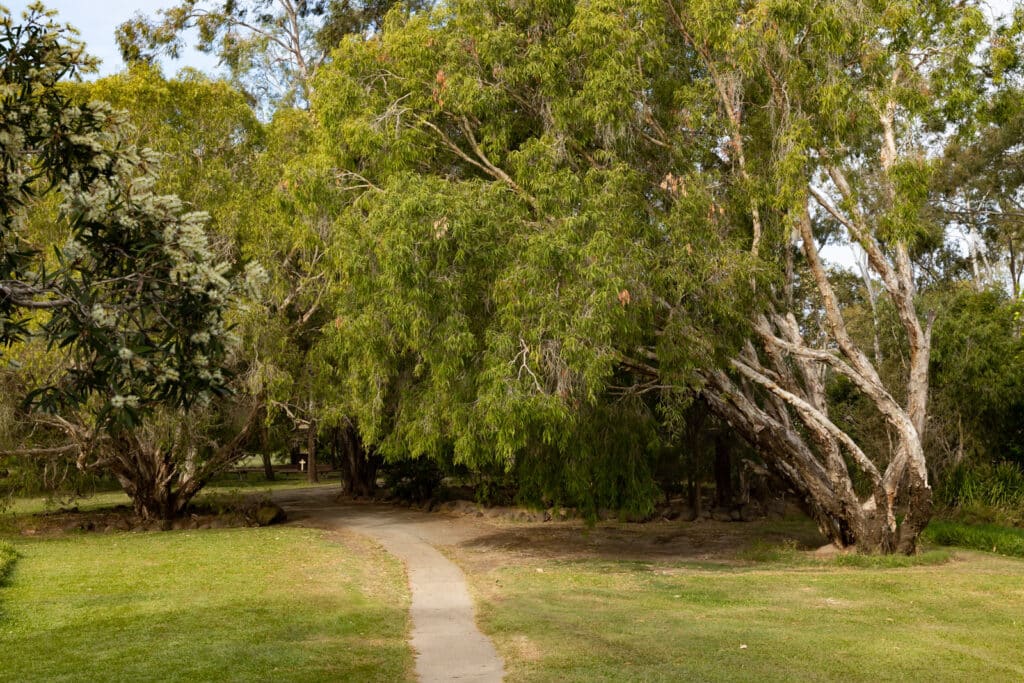
Today Baldwin Swamp is an area full of interesting flora, fauna, walking trails and more in the heart of the Bundaberg Region, but did you know it was originally used to supply water to the town?
Listed as one of Bundaberg Regional Council’s Local Heritage Places, the area has transformed greatly over time.
A need for water supply
The first local government, called The Bundaberg Divisional Board, instigated plans for the construction and improvement of civic amenities.
Amongst these was the establishment of a reticulated water supply.
Councillor WH McCann proposed a scheme for drawing water from a dam constructed at Baldwin’s Swamp in East Bundaberg using an elevated water tank to provide pressure in the late 1880s.
‘Baldwin’s Swamp’ was named after early settlers in the district, Thomas Baldwin and his wife.
The Baldwins took up land near the swamp c1872 and commenced dairying, presumably using the swamp as a water supply.
The origin of the dam is unknown, but it may have dated from the period of their occupation and use of the area.
The wetland was originally named ‘Deep Reedy Creek’, but was known as Baldwin’s Swamp from at least the 1880s, as it was referred to as such in newspaper articles.
Despite the initial enthusiasm for the reticulated water supply, it took some time before it was completed.

WC Clements, a hydraulic engineer, prepared plans based on McCann’s scheme in 1889.
The Queensland Government engineer, JB Henderson, revised the plans, recommending a brick tower rather than a water tank.
The Divisional Board appears to have asked Henderson to oversee the plan.
Construction of the tower and the network of pipes began in 1900 and was completed in 1902.
A steam pump, located on the edge of Baldwin Swamp, pumped the water to the tower.
The water quality from the swamp was not considered ideal, and an alternative, underground water supply was secured in 1907, from which time the swamp was no longer used for the town’s water.
Water from the swamp was nonetheless used for other purposes.
The Bundaberg Distillery, known today as the Bundaberg Rum Distillery, used water from the swamp in the late nineteenth century.
The swamp was a popular picnic spot in the nineteenth century, used regularly for school picnics, and also for hunting.
The area was also used by Chinese residents for market gardens (the principal supply of vegetables in towns and settlements in Queensland in the late nineteenth century was provided by Chinese market gardeners) and also as a camp site and food supply during the Great Depression in the late 1920s and early 1930s.
Locals show appreciation for Baldwin Swamp
The environmental protection and appreciation of the swamp has become increasingly important to members of the Bundaberg community in the twentieth century.
According to research undertaken for the wetlands in the 1990s, up to 200 acres were set aside as a Fauna Reserve in 1929.
Despite the gazettal, the swamp was used as a dumping ground for rubbish and it became overgrown.
There was renewed interest in the swamp in the 1980s (as part of a similar environmental awareness that also contributed to work on Queen’s Park in this period – see the Queen’s Park place card).
The swamp was gazetted as an environmental park in 1981, possibly as a result of work by the noted botanist, Harry Frauca, who lived in Bundaberg and promoted the swamp in the 1970s.

In 1985, the Queensland Parks & Wildlife service and Bundaberg Council constructed walking paths and boardwalks, and modified the water course, for people’s enjoyment.
However, the work was not maintained and the site was again largely abandoned to vegetation.
Council established an advisory committee for the swamp in 1992 after a public meeting about the future of the swamp and the first of a series of management plans were prepared at this time.
Substantial work has been undertaken to improve the amenity of the swamp.
One of the walkways is named the Harry Frauca Walkway in honour of the botanist’s work to promote the swamp.
Related stories: History of Bullyard Hall





Great read
I have always enjoyed the interesting walk around the swamp . It’s even better now you can walk from Totten street.
Cheers
no mention about the clean up some time back where the salt water table was entered into.
More likely it was Steindl’s City/Bundaberg Brewery that drew water from the swamp. Also I believe the Chinese gardens were on Kendall’s Flats not in the swamp which was more of a pasturage reserve. I thought Friends of Baldwin Swamp disbanded after a dispute with the previous council
Baldwin Swamp was originally the north east part of Alexander Walker’s 200 acre selection bounded by George, Boundary, FE Walker and Totten streets plus the section following Bundaberg Creek east
Mr. Robertson, go back far enough with Mr. Alexander Walker and the Bingera Run, and some buildings and yards and marked, there were no roads at all. then consider R.P. Marshall before him. i thought there was also a tale about the brewery selling kegs shy of measure and he got caught out.
Mr Hopton obviously there were no roads apart from George and Boundary. FE Walker and Totten came later on the boundarys. Alexander Walker owned a lot of land apart from the Bingera run
After his death in1879 Alexander Walker’s selection was sub divided about the mid 1880s along with his other large holdings in South Bundaberg. It must have been at this time that the council acquired Baldwin Swamp
Possibly the name came from if William Baldwin was leasing the land from Alexander Walker. Certainly they would have known each other from South Bingera
Instead of making assumptions, why don’t people go through land files and perhaps purchase a historical land title or two. Land transactions were recorded on the titles. Leases were generally registered and these also were recorded on the historical title deeds. These records can be found on the Titles Office Site and you have to pay for a copy of these historical records. Marilyn and I did this years ago on the other side of the river and a few people did not like those results.